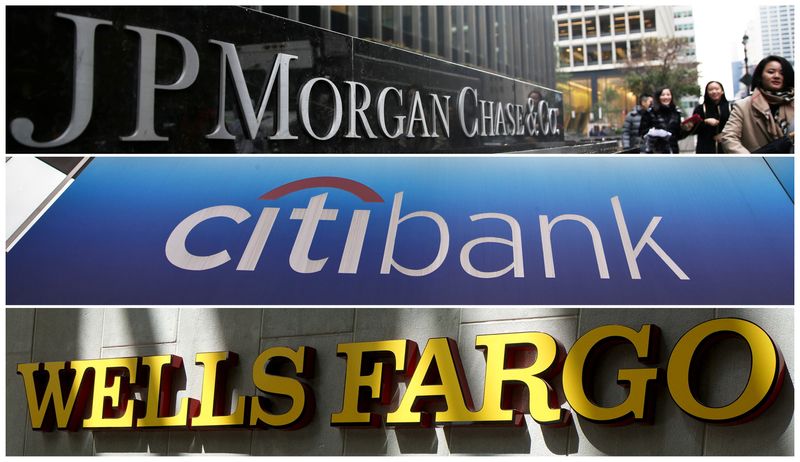(Reuters) - Big U.S. banks had enough capital to weather a potentially severe economic downturn but some of their risky businesses could hypothetically take a major hit this year, according to results of the Federal Reserve's annual stress test.
The 31 banks that participated showed they could withstand a spike in joblessness and stresses in the commercial real estate market and still have enough capital available to lend.
Their common equity tier 1 (CET1) ratio, a metric that gauges high-quality capital, will dip to 9.9% at its lowest, still far ahead of the 4.5% minimum requirement.
Here is how some of the biggest U.S. banks fared in the test:
Bank Minimum
common equity tier 1
(CET1) ratio
JPMorgan Chase (NYSE:JPM) 12.5%
Bank of America 9.1%
Wells Fargo 8.1%
Citigroup 9.7%
Goldman Sachs 8.5%
Morgan Stanley 10.6%
The Fed also projected losses on loans could reach up to $571 billion under its severely adverse scenario. Credit card loans could be tricky, the central bank said.
The corporate credit portfolios of banks have also shifted towards riskier loans. They now hold a larger share of non-investment grade corporate credit, which are over three times more likely to default than investment grade ones, the Fed said.
Here are the banks with the steepest potential loan losses, according to the central bank:
COMMERCIAL AND INDUSTRIAL LOANS -
Bank
Projected losses
(as % of average
loan balances)
Discover Financial 21.8%
Barclays US 19.3%
Goldman Sachs 16.2%
CREDIT CARDS -
Bank
Projected losses (as
% of average loan
balances)
Ally Financial (NYSE:ALLY) 40.6%
Goldman Sachs 25.4%
Capital One 23.2%
COMMERCIAL REAL ESTATE LOANS -
Bank Projected loan
losses (as % of average
loan balances)
Goldman Sachs 15.9%

Royal Bank of Canada USA 15.8%
Capital One 14.6%